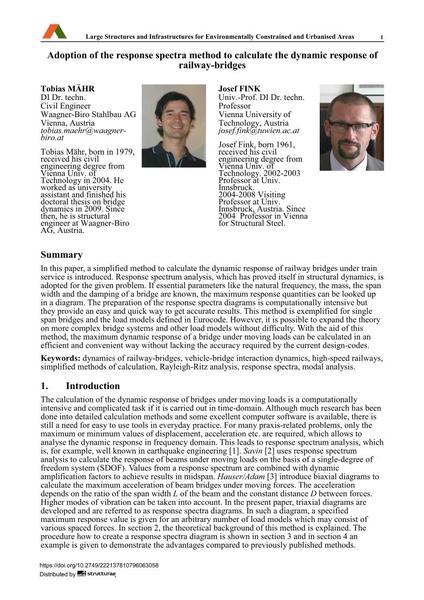Adoption of the response spectra method to calculate the dynamic response of railway-bridges

|
|
|||||||||||
Détails bibliographiques
| Auteur(s): |
Tobias Mähr
Josef Fink |
||||
|---|---|---|---|---|---|
| Médium: | papier de conférence | ||||
| Langue(s): | anglais | ||||
| Conférence: | IABSE Symposium: Large Structures and Infrastructures for Environmentally Constrained and Urbanised Areas, Venice, Italy, 22-24 September 2010 | ||||
| Publié dans: | IABSE Symposium Venice 2010 | ||||
|
|||||
| Page(s): | 636-637 | ||||
| Nombre total de pages (du PDF): | 8 | ||||
| Année: | 2010 | ||||
| DOI: | 10.2749/222137810796063058 | ||||
| Abstrait: |
In this paper, a simplified method to calculate the dynamic response of railway bridges under train service is introduced. Response spectrum analysis, which has proved itself in structural dynamics, is adopted for the given problem. If essential parameters like the natural frequency, the mass, the span width and the damping of a bridge are known, the maximum response quantities can be looked up in a diagram. The preparation of the response spectra diagrams is computationally intensive but they provide an easy and quick way to get accurate results. This method is exemplified for single span bridges and the load models defined in Eurocode. However, it is possible to expand the theory on more complex bridge systems and other load models without difficulty. With the aid of this method, the maximum dynamic response of a bridge under moving loads can be calculated in an efficient and convenient way without lacking the accuracy required by the current design-codes. |
||||
